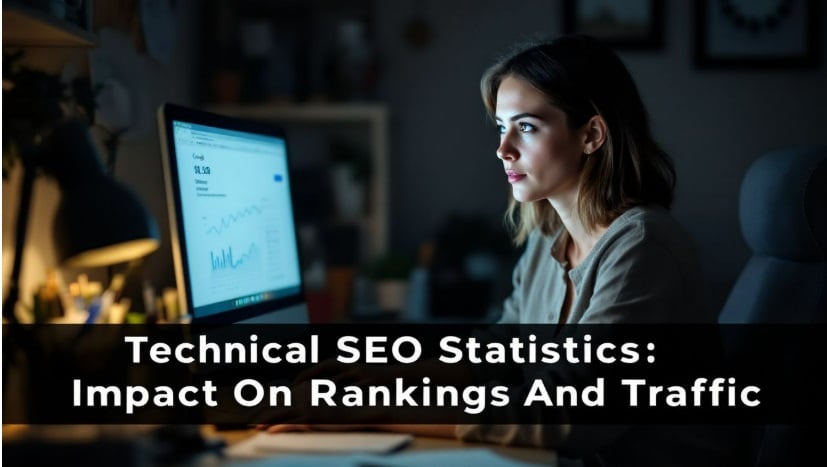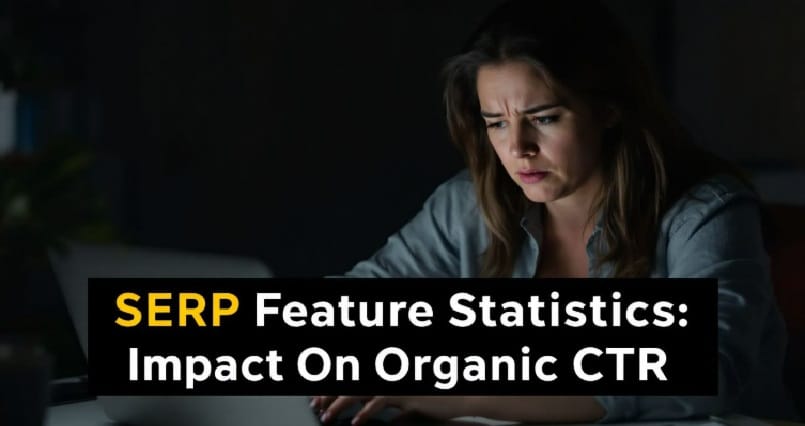Is your brand struggling to get noticed online? SEO plays an important role here. This article will show you how to integrate SEO effectively into your marketing strategy.
Ready to let them know more? Let’s go for it!
Key Takeaways
- SEO makes it easier for your website to be found in search engines like Google, resulting in more visitors.
- Using the right keywords helps people find your website when searching online.
- Content marketing engages visitors with helpful articles and videos.
- Off-page strategies like getting links from other sites can boost your ranking in search engines.
- Monitoring how well your SEO is performing lets you know if you need to make changes.
Download Our Free SEO Guide Here!
Understanding SEO in Marketing
SEO to make your website more user-friendly and accessible to search engine crawlers. It helps engines like Google and Bing point people right to your door while searching online.
Definition of SEO
SEO means search engine optimization. It’s like giving your website a map so people can find it easily on Google or Bing. By improving your website, you help more people find what you have to offer when they search online.
This strategy uses keywords that align with your target audience’s searches. It ensures that your website shows up high in search results.
This program uses tools like Semrush and Google Analytics to understand how well your website is performing. Keywords are the key here. Think of them as the secret sauce that attracts visitors from the vast ocean of the Internet to your website.
Making small changes to improve how friendly your website is can lead to greater success in attracting organic traffic – that means visitors come from search, not ads!
The role of SEO in digital marketing
SEO makes your website a star player in digital marketing. It’s like a hidden map that directs search engines directly to your content. SEO isn’t just about throwing words at a website; you craft each sentence to catch Google’s eye.
This means knowing what people are typing into that search bar and ensuring those exact terms appear on your site. Imagine putting up glowing neon signs that scream, “Click me!” to anyone navigating the online realm.
Now, imagine building bridges with keyword backlinks – that’s SEO at work, connecting customers to your brand across the vast ocean of the internet. Every backlink is like a vote that says, “Hey, this content is definitely worth a look!”
Plus, sharing your content via social media or email blasts? That spreads the word about a city faster than wildfire. All of these efforts call for your visibility and drive traffic exactly where you want it: your beautifully designed landing page ready to welcome visitors from across the web universe.

SEO and the Go-to-Market Strategy
SEO is like the secret spice in your fancy marketing recipe. It ensures that your company comes first when customers start looking for what you’re cooking.
What is a go-to-market strategy?
A go-to-market strategy is like a game plan for your product or service. Think of it as the roadmap that helps you smoothly introduce your offerings to the market. This strategy guides you on who to sell to, how to reach them, and what messages to share.
It’s key when launching a new item or stepping into fresh markets.
This approach involves picking the best marketing channels, whether that’s social media platforms, email campaigns, or something else. SEO becomes a powerful tool that ensures your product shows up online where potential buyers are looking.
By weaving SEO into your go-to-market plan, you boost visibility and improve your chances of connecting with your target audience right from the start.
The integration of SEO in go-to-market strategy
SEO slides into your go-to-market strategy like a key into a lock. It starts with understanding what your target market is searching for online. This means doing keyword research to get inside the heads of potential customers.
They may use phrases or questions you haven’t considered, but these keywords are golden tickets to being found online. Once you’ve got this insight, it shapes everything from product descriptions on your e-commerce site to blog posts and social media updates.
Next up, creating content that ranks well on Google and other search engines is crucial. But it’s not just about jamming those keywords in wherever they fit; it’s about serving up useful information that answers real questions and solves problems for people who might buy what you’re selling.
Let’s not forget the power of link building—getting other reputable sites to link back to yours boosts credibility with users and search engines alike. All these tactics work together like gears in a machine, making sure that when someone types a query related to what you offer into their browser, your business shows up front and center.
Implementing SEO in Your Marketing Plan
Adding SEO to your marketing plan is like adding a turbo boost to your car. It’s all about making your website easy to find and ensuring that visitors stick around.
Site optimization
Site optimization is key to getting your website ready for the big leagues. It ensures your online spot is easy to find, user-friendly, and chock-full of your audience’s wants. Here’s how to nail it:
- Make your website fast and mobile-friendly. A snail-paced site sends visitors packing. Utilize resources such as Google PageSpeed Insights to enhance the speed of your website. Ensure your site looks good on smartphones and tablets, too.
- Incorporate the appropriate keywords in all the relevant locations. Dive into keyword research to find out what terms your audience uses. Sprinkle these magic words across your web pages, especially in titles, headings, and meta descriptions.
- Create killer content that people love to read and share. Whether it’s blog posts, videos, or infographics, make stuff that answers questions and solves problems. It should be clear, engaging, and packed with value.
- Build backlinks, but keep it classy. Links from other reputable websites are like gold stars for SEO. Reach out to influencers, guest post on blogs, or create share-worthy content that naturally attracts links.
- Keep social media in your toolbox to spread the word about new content or updates on your site. Share snippets, insights, or full articles across different platforms like YouTube or X (formerly Twitter).
- Navigating your site should be a walk in the park with a clean layout and intuitive design elements—no treasure maps needed here! People should find what they need in just a few clicks.
- Track how well you’re doing with analytics tools like Google Analytics or HubSpot’s dashboard system you use for checking insights about visits & engagements on websites digitally; see where visitors come from, what they do on-site, and where there might be room for improvement.
Each step requires effort, but think of it as tuning up a race car; every adjustment gets you closer to winning the digital marketing grand prix!
Keyword research
Keyword research is like a treasure hunt for your SEO marketing plan. It shows you where the gold is buried in search engines. Here’s how to start digging:
- Use tools like the Keyword Magic Tool. This gadget helps you find words people type into Google. You get a big list of how often each word gets searched and what folks mean when they search it.
- Check out what your rivals are up to with the Keyword Gap tool. This lets you see which keywords they rank for that you don’t. Now, you know where to aim your efforts.
- Think about what words make sense for your stuff. If you sell bikes, terms like “fastest mountain bike” or “bike helmet with lights” could be winners.
- Look at long-tail keywords—these are longer phrases that are super specific. They might not get heaps of searches, but the folks searching for them are likely ready to buy or learn more.
- Use tools and social media site hashtags to monitor trends in your field.
- Don’t forget about understanding user intent – why someone types a search into Google can help you make content that answers their questions or solves their problems directly.
- Finally, repeat this process regularly because the online world changes fast!
With these steps, keyword research will not only fit into your marketing plan but also help you grab the top spots on SERPs, drive more website traffic, and make your brand more visible online.
Developing a content marketing plan
A content marketing plan is vital for a winning marketing strategy. It boosts your brand’s visibility and draws more eyes to your website. Here is how you can craft one that hits the target:
- Set clear goals: Decide what you want from your content. More website visits? More email sign-ups? Setting goals gives you direction.
- Understand your audience: Delve into the demographics and preferences of your readers. What do they like? What do they need? This knowledge lets you create content they’ll love.
- Choose the right topics: Pick topics that match what your audience searches for online. This step makes sure your content speaks to them directly.
- Plan your keywords: Use tools like Google’s Keyword Planner to find words people use in search engines. These words should sprinkle through your posts to help people find you.
- Decide on content types: Will it be blog posts, videos, or infographics? Mixing it up keeps things interesting for your audience.
- Create a content calendar: Schedule when you’ll publish new stuff. This keeps you organized and tells your audience when to expect fresh content.
- Focus on quality over quantity: Make every piece of content valuable and well-made. Good quality keeps readers coming back for more.
- Promote your content: Share what you’ve created with the world using social media, emails, and other websites.
- Analyze and adjust: Check clicks, shares, and comments to see how well your content is performing. Learn from what works and tweak what doesn’t.
- Keep learning: SEO and digital marketing always change. Stay updated on trends and tools to help you stay ahead of the game.
Making a solid plan isn’t just about ticking boxes; it’s about connecting with people meaningfully through great stories and useful information posted at just the right time.
Creation of quality content
Making great content is like cooking a meal that everyone talks about at a big family gathering. You pick the right ingredients, in this case, words and ideas tied closely to what people are searching for online.
Google loves it when your articles or blog posts answer many users’ questions. So, you dive deep into keyword research to find out exactly what flavors—oops, I mean topics—your audience craves.
This step ensures your website’s buffet has all the right dishes to satisfy visitor hunger.
Next comes stirring in heaps of creativity with those well-researched keywords. Your goal? To cook up SEO content that ranks high on search engine results pages and gets shared across social media platforms like hotcakes at breakfast.
Remember how grandma’s recipes always had that secret ingredient? Well, consider Google’s E-A-T principles (experience, expertise, authoritativeness, and trustworthiness) as yours.
It guarantees that each piece you publish builds trust with readers while boosting your site’s authority in Google’s eyes, making sure it stands out in the crowded digital marketplace.
Off-page optimization strategies
Off-page optimization strategies stretch beyond your website to boost your spot in search engine outcomes. These tactics involve winning trust and authority from other websites through link building and media attention.
Here are the key steps:
- Get links from respectable sites: Consider the internet a big popularity contest. The more cool friends (or high-quality sites) you have pointing to your site, the more search engines think you’re cool, too. It’s like getting a thumbs-up from the popular kids in school.
- Be social: Transmit your content on social media platforms. It’s like telling a joke at a party; if it’s good, people will pass it on. This sharing helps build your site’s reputation and brings more visitors.
- Guest blogging: Write awesome articles for other websites. This is like being a guest star on your favorite TV show; you get to show off to a new audience and leave them wanting more of you, leading them back to your site.
- Engage in forums and community groups: Join conversations online that relate to what you do or sell. It’s like joining clubs that interest you; you make friends who share your interests and might check out what you offer.
- Create shareable content: Develop infographics, videos, or blog posts that people can’t help but share. It’s like having that one story everyone tells at parties; it gets around because it’s just that good.
- Use local listings: Claim your business on Google My Business and other directories. It’s akin to putting a sign out front in the digital world saying, “Hey, we’re here!”
Each of these strategies helps increase visibility and drive traffic back to your website without directly tweaking what’s on your page. Like scattering seeds on fertile ground, off-page SEO spreads your influence across the web, helping grow your presence one link at a time.

Evaluating SEO Performance
To see if your SEO game is strong, keep an eye on how high you rank on Google. Use tools like Google Analytics to watch the clicks and buzz your website gets.
Tracking SEO marketing strategy success
Keeping tabs on your SEO marketing strategy’s success is like keeping score in a game. You gotta know if you’re winning, right? Here’s the lowdown on how to track that victory lap.
- Check your spot on the search engine results page (SERP). You want your website up top.
- Use tools like Google Analytics. This tool tells you where your visitors come from and what they do on your site.
- Monitor your click-through rate (CTR) closely. High CTR means people find your listing relevant and click to learn more.
- Watch out for website traffic trends over time. Are more people visiting? That’s good news! This indicates that your SEO strategies are yielding positive results.
- Measure conversions from organic search traffic. If folks visit, buy something, or sign up, you’re doing it right!
- Look at the quality and number of backlinks.
- Monitor keyword rankings for important words or phrases relevant to your business. You wanna be found for the right reasons.
- Utilize heat maps to see how users interact with your pages. This can show if they find what they need easily.
- Track social media mentions and shares related to your content or brand awareness campaigns—social buzz matters!
- Analyze the loading speed of your site because slow sites lose visitors quickly.
- Compare new vs. returning user behavior to gauge loyalty and interest in your content over time.
- Examine mobile user engagement since more folks use their phones than anything else to browse online nowadays.
This checklist keeps you aimed in the right direction, helping ensure every move counts towards winning that SEO game!
The importance of marketing attribution
Marketing attribution shows us which channels bring real results. Think of it as a map that leads to treasure, with the treasure being more sales and happy customers. Companies can see where their visitors come from using tools like GA and CRM software.
This helps them decide how to spend their money wisely on different platforms, such as email campaigns or social media ads.
Comparing the contribution of each channel in driving a sale is akin to solving a puzzle. Multi-touch attribution models acknowledge all customer interactions before making a purchase decision.
This way, businesses can understand better ways to reach out to people at just the right time. It’s not just about throwing darts in the dark; it’s about aiming precisely and knowing what works best for drawing in those most likely to become loyal customers.
SEO’s contribution to revenue
SEO turns the spotlight on your company’s website in the vast internet world. It’s like having a super salesman working around the clock, drawing in customers. By targeting key phrases and topics your audience cares about, SEO helps you show up right where your potential buyers are searching.
This isn’t just about getting clicks; it’s about converting those clicks into cash register rings. Every time someone finds your site through a Google search and makes a purchase, that’s SEO directly feeding your revenue stream.
Think of SEO as planting seeds for future sales. With tools like BrightEdge, businesses can see which strategies pull buyers in and lead to actual purchases.
The process involves tweaking web pages, crafting articles people want to read, and making sure other sites link back to yours – all with the goal of climbing search engine rankings and capturing more market share.
As visibility increases, so does traffic and ultimately revenue. Done right, investing in SEO means investing in a growth engine for the business.
SEO and Content Marketing Synergy
SEO and content marketing complement each other like peanut butter and jelly, creating a delicious digital strategy that appeals to Google’s search results page.
The relationship between SEO and content marketing
SEO and content marketing fit together like puzzle pieces. You use SEO to help people find your website through Google searches. Then, content marketing keeps them interested with great articles or videos.
This team-up is crucial for showing up in search results and keeping visitors coming back.
Creating helpful and exciting content makes a big difference for SEO. If your stuff is good, other websites might link to it or share it on social media platforms like Facebook or Twitter.
This can make even more people visit your site. Plus, understanding what folks are looking for helps you create the right kind of content that answers their questions or entertains them just right.
Top practices for incorporating SEO and content marketing
Merging SEO with content marketing is like adding rocket fuel to your car; it’s all about speed and direction. Here are some of the best ways to make this combo work wonders for you.
- Get the right keywords: Dive deep into keyword optimization. Use tools like Google Search Console to find what your audience loves. This way, you’re not shooting in the dark but hitting the bullseye every time.
- Understand your audience: It’s not just about words on a page. Know the folks you’re talking to. What do they want? Learning the content of this shape that speaks directly to them, making each click a conversation.
- Consistency is key: Don’t be a one-hit wonder. Roll out fresh and engaging material regularly using an editorial calendar. This keeps your site alive and kicking in search engine results.
- Quality over quantity: Sure, writing a lot helps. But if it’s not interesting, forget about it! Craft pieces that add value, solve problems or simply make someone’s day better.
- Spread the word: Your content’s journey shouldn’t end on your website. Transfer it across social media platforms, emails, and other websites through guest posts.
- Track everything: What’s working? What’s not? Tools like Semrush can show you how well your SEO and content marketing exertions are paying off.
- Link it up: Internal links guide visitors through your site, keeping them around longer while also helping search engines understand what’s important on your site.
- Consider user experience: Make sure your website is easy to navigate and reads well on any device. This encourages visitors to stick around longer.
Combining SEO with content marketing isn’t just smart; it’s essential for giving your brand the voice and visibility it deserves online.
Conclusion
SEO fits like a puzzle piece in your marketing plan. It boosts your web pages to the top of Google’s list, making sure more eyes land on what you offer. With tools like keyword analysis and content creation, it helps you reach the right people.
Think of SEO as your digital megaphone, amplifying your message far and wide. So, by weaving SEO into every part of your strategy, you’re not just playing the game; you’re winning it.

Frequently Asked Questions
-
What’s SEO, and why should I care?
Think of SEO as the confidential sauce that makes your website tasty to Google. It helps people find you online without spending a dime on ads. If you want folks to visit your site, SEO is your best friend.
-
How does SEO fit with stuff like social media or email marketing?
Imagine your marketing plan is a big puzzle. Each piece, from social media to email blasts, fits together perfectly. SEO is one of those crucial pieces, making sure when people search for what you offer, they land on your page and not someone else’s.
-
Can good SEO really boost my business?
Absolutely! When done right, it leads more eyeballs to your website, which can mean more cash in the bank. Think of it as setting up a signpost in the digital jungle guiding adventurers straight to you.
-
Is technical SEO some sort of wizardry?
Not exactly wizardry but close! Technical SEO involves behind-the-scenes tweaks that make sure search engines can read your site easily—like ensuring it loads faster than a cheetah on roller skates.
-
Do I need fancy tools or an expert for killer SEO?
While having an expert can help navigate the choppy waters of Google’s algorithms, there are tons of DIY tools out there, too. Start small, use what’s free, and learn as you go along—it’s like learning to swim without jumping into the deep end!
-
Will investing time in SEO pay off?
You betcha! Think about investing time in crafting great content and optimizing for search engines as planting seeds; eventually, they’ll grow into towering trees bearing fruits all year round—a gift that keeps on giving.

















0 Comments